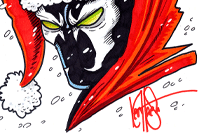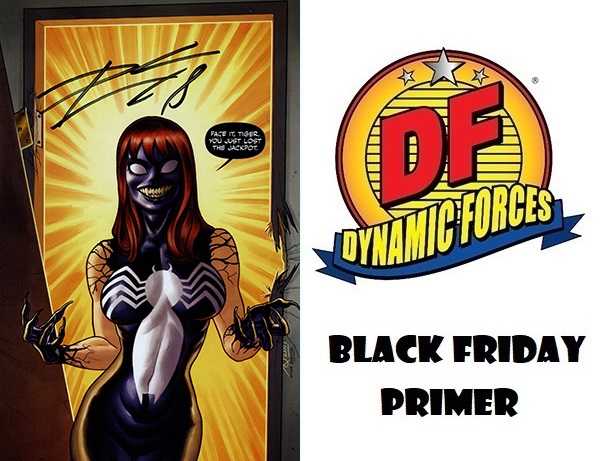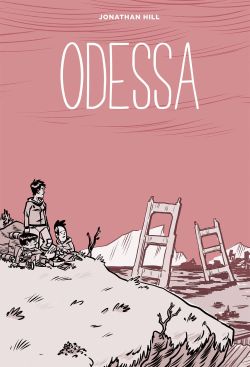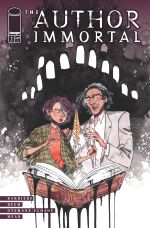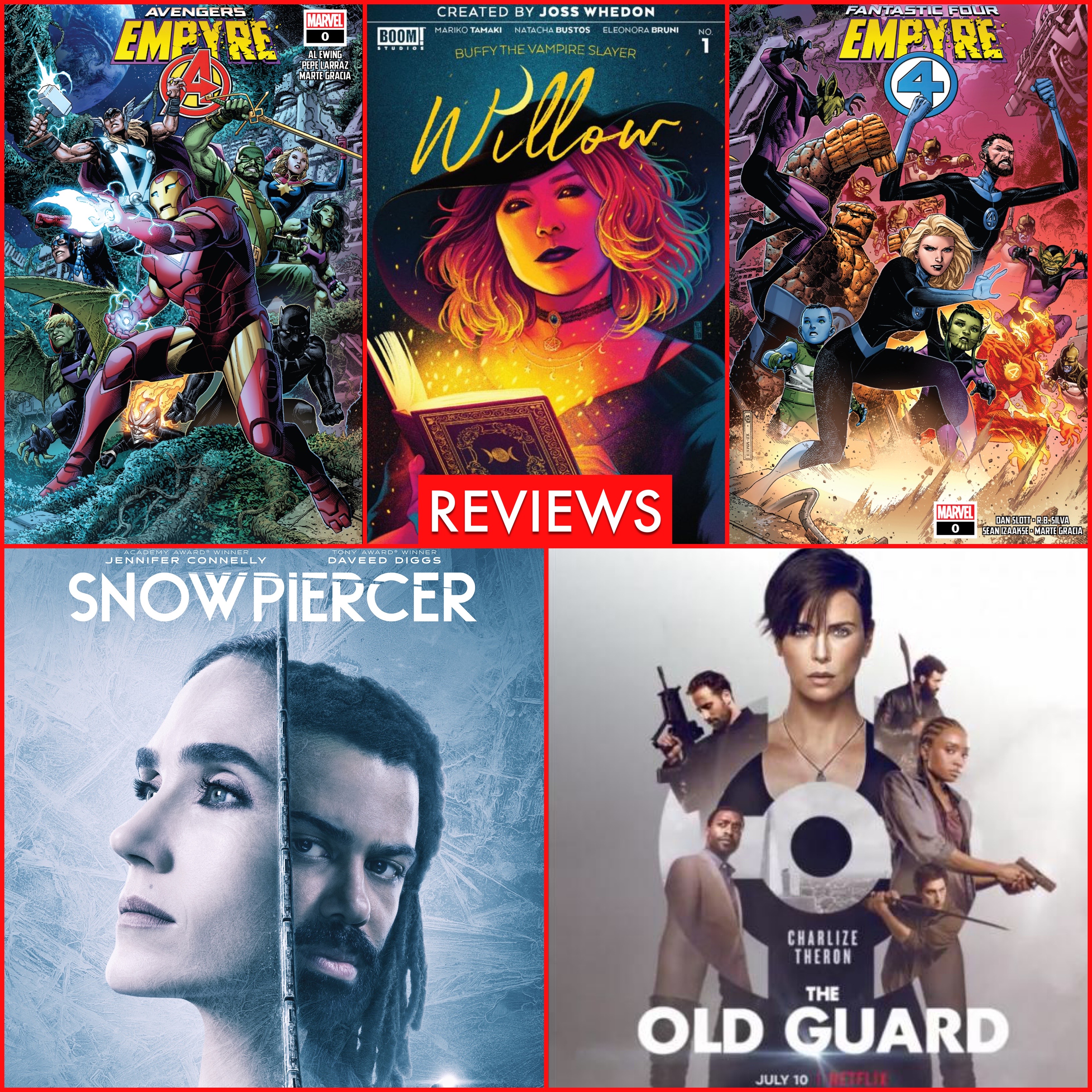JONATHAN HILL
 SEND THIS TO A FRIEND! SEND THIS TO A FRIEND!
DF Interview: Jonathan Hill sends siblings on a search for their missing mom across a ruined America in the ‘Odessa’ OGN By Byron Brewer Eight years ago an earthquake – the Big One – hit along the Cascadia fault line, toppling cities and changing landscapes all up and down the west coast of the United States. Life as we know it changed forever. But for Vietnamese American Virginia Crane, life changed shortly after the earthquake, when her mother left and never came back. Ginny has gotten used to a life without her mother, helping her father take care of her two younger brothers, Wes and Harry. But when a mysterious package arrives for her eighteenth birthday, her life is shaken up yet again. For the first time, Ginny wants something more than to survive. And it might be a selfish desire, but she's determined to find out what happened to her mother – even if it means leaving her family behind. From Oni Press comes the graphic novel Odessa, written and drawn by Jonathan Hill. DF wanted to take a deep dive into this OGN, so we sat down with most of the creative team: Jonathan Hill. Dynamic Forces: Jonathan, tell readers a little about the inspiration for Odessa. How long has it been simmering on the Hill backburner? Jonathan Hill: I think I got the original idea for Odessa back in 2011? My first book, Americus, had just come out. My friend MK wrote it and I did the art. Anyhow, she already had her next project lined up, and I didn’t have anything. I remember trying so hard to come up with ideas for a new book, and nothing was working. I would come up with projects that were clever or maybe would be fun to draw, but none of them had “heart.” None of them had that thing that grounded them and connected them to something bigger. It was frustrating and scary. Around the same time, my now sister-in-law was getting divorced. She has three kids and they were about the same age as I was when my parents got divorced and I could see the way it was affecting them. Everything they knew was being destroyed. Their world was being destroyed. I remembered what that was like and how my brothers and I learned to survive together in a way, and it was like a bunch of things clicked. It had the concept and a real, emotional core about what it’s like to be left behind and to go searching for answers. Although I had something now, life kind of got in the way. My father and brother both died the following year, and I had some health issues that almost stopped me from drawing comics completely. I was able to work on Odessa (though it had a different title at the time) in bits and pieces over the years, but it was slow. I think I managed to get together a very rough draft of the script, and a full chapter completed, but wasn’t sure what I was going to do with it. Oni Press was having an open submissions call at the time (2015) and it was serendipitous that I had what was essentially a pitch ready to go. I submitted it and, well, here we are. I guess all that to say: it was simmering on the Hill backburner for a really, really long time before it actually became a thing. Ha ha. DF: Before we go to the specific, let’s deal with the general. What has the earthquake eight years ago (the Big One) meant for life and land around America and perhaps elsewhere? How has everyday life changed? Jonathan Hill: So as you mentioned, the setting of Odessa takes place in a world where there was a devastating earthquake that basically destroys the West Coast. It literally cuts through California and part of it floats into the Pacific, creating a strait from the Bay Area to Southern California. In this first book, we don’t really get a lot of information about the rest of America, except that this didn’t just affect the coastal region, but the Midwest as well. Along the Mississippi River, a wall has been built by the Eastern States to keep the people from the West out. The story starts in the Pacific Northwest and life has gotten simpler. Without manufacturing, people are relying on themselves more. They’re homesteading, they’re trading and bartering. They’ve built a quiet, peaceful community from the ruins of those earthquakes. But it isn’t the case everywhere. There are rumors to the south of bandit gangs, lawlessness, and even mutants. DF: Introduce readers to Virginia Crane. Who is she as a character? Is she based on anyone from your real life, by chance? Jonathan Hill: Virginia Crane is the oldest of her three siblings. With her mother having left at a very young age, and right after the earthquakes that destroyed the world, she’s had to learn to survive and grow up a lot sooner than maybe she wanted to. She didn’t just have to learn to take care of herself, but her father and brothers too. Because of this, she’s crafty and resourceful, but also stubborn and feels like she’s always right. She’s inspired by my mom a little bit, who is also the oldest and has had to survive and take care of her siblings when she was growing up in Vietnam, but also a real blend of some other people in my life. I think all of the characters in the book are like that. DF: Talk about the relationship between Ginny and her absent mother; between her and her family (father and siblings) as she is most likely serving in the mother figure role. Jonathan Hill: Ginny is very much like their estranged mother, Odessa. She is very free-spirited and strong-willed like her, and is often at odds with her father, who is a little more reserved and quiet. This isn’t the only thing that connects her to her mother; she is the only one really old enough to remember anything about Odessa. Her brothers were so young when she left, she’s more of a mythological figure to them. Being the oldest, she has had to take on a surrogate parent role to her younger brothers. She sometimes resents having that responsibility being forced on her, but Wesley, the middle brother, also resents it. He thinks he’s old enough and capable enough to take care of himself and feels like he’s being treated like a baby. DF: What is the overall plot of Odessa? Jonathan Hill: The story starts showing the sort of day-to-day life of the Cranes in this post-apocalyptic world when a mysterious package gets delivered. It’s a birthday gift for Ginny from their estranged mother, Odessa, who left eight years ago after the Great Disaster. With the revelation that her mom is alive, Ginny decides to leave on her own to go looking for her. Her brothers sneak after her and the three embark on a journey that takes them south to California, which they find is much more dangerous than they could ever have imagined. DF: What is your process for creation as both artist and writer? Can you break it down for us? Jonathan Hill: Even though I’m a writer and an artist and I think very visually, I need to start with writing just so I have some framework to work off of. I always do a first draft by hand, and it’s usually just writing out beat-by-beat what happens, what gets said, etc. If there are certain scenes that I already have pictured, I sketch them out as I write. I found that if I try to type for this first draft, I just end up in a cycle of deleting and typing, deleting and typing. Writing by hand is really important to me because it helps me generate ideas and just lets things flow out. After I have this first draft, I’ll do another round where I edit what I had written while I type it out, which makes it cleaner and serves as a very loose script for me to use. I’ll usually print this out and then do my thumbnails, or quick sketches on these printouts. Again, I need to sketch them out in pencil to help ideate and problem solve. This first draft of thumbnails is really to figure out pacing, composition, and storytelling. I’ll then do another draft of thumbnails where I’ll revise and make the drawing a little clearer. For Odessa, I scanned and lettered those thumbnails so that my editor could read through the story and get a sense of what would be happening and give me feedback. Once everything got okayed, I would drop those thumbnails into Clip Studio Paint and then pencil, ink, and then tone the pages digitally over those thumbnails. This is actually my first book I have worked on completely digitally. It was definitely a learning curve, and I wasn’t even intending to work that way. I was originally planning on penciling digitally, printing out the pencils, and inking analog and then scanning that in. But when I was showing my students my process, someone commented that my pencils were so tight, I should just turn them into inks. I eventually did that and realized that it would save me a lot of time to just work 100% digital. I’ll admit that I don’t love it as much as inking with a brush, but comics are such a marathon and anything that shaves off time… it adds up and helps you work more efficiently. I was happy to give up that analog process for something that would end up saving me hours each page. DF: Jonathan, aside from Odessa what other projects, inside or outside comics, are you working on that you can tell readers about? Jonathan Hill: I’m currently working on my next book, True Tales of a Seventh Grade Lizardboy, which will be published by Walker Books/Candlewick. It will be out in 2022. Art, writing, and storytelling have been so important to me my whole life and outside of my comics work, I do a lot of arts outreach. I have served as a facilitator and on the Advisory Council of the non-profit Create More, Fear Less, that uses art and writing to give youth (and anyone really) tools to help manage anxiety. The projects and materials are completely free and available for anyone to access on their website. We’ve also been teaming up with the Portland Art Museum to work on some other projects like Journal On, a series of videos focusing on keeping an art journal and sketchbook, and Create More, an upcoming series of videos that connect creative practice to social & emotional learning. I also serve on the Board of Directors for Literary Arts, another non-profit in town that engages readers and supports writers. Most recently we’ve provided two rounds of grants the last few months to writers with a focus on writers of color who have been impacted by COVID, as well as created video resources by professional writers for high school students in the Portland Metro area. Dynamic Forces would like to thank Jonathan Hill for taking time out of his busy schedule to answer our questions. The Odessa OGN from Oni Press is slated to hit stores Nov. 11th! For more news and up-to-date announcements, join us here at Dynamic Forces, www.dynamicforces.com/htmlfiles/, “LIKE” us on Facebook, www.facebook.com/dynamicforcesinc, and follow us on Twitter, www.twitter.com/dynamicforces.
NEW! 1. 09/23/2025 - FRANK BARBIERE2. 09/16/2025 - RODNEY BARNES 3. 09/10/2025 - ZACK KAPLAN 4. 08/26/2025 - JOE PRUETT 5. 08/20/2025 - CHRISTIAN WARD Show All |

